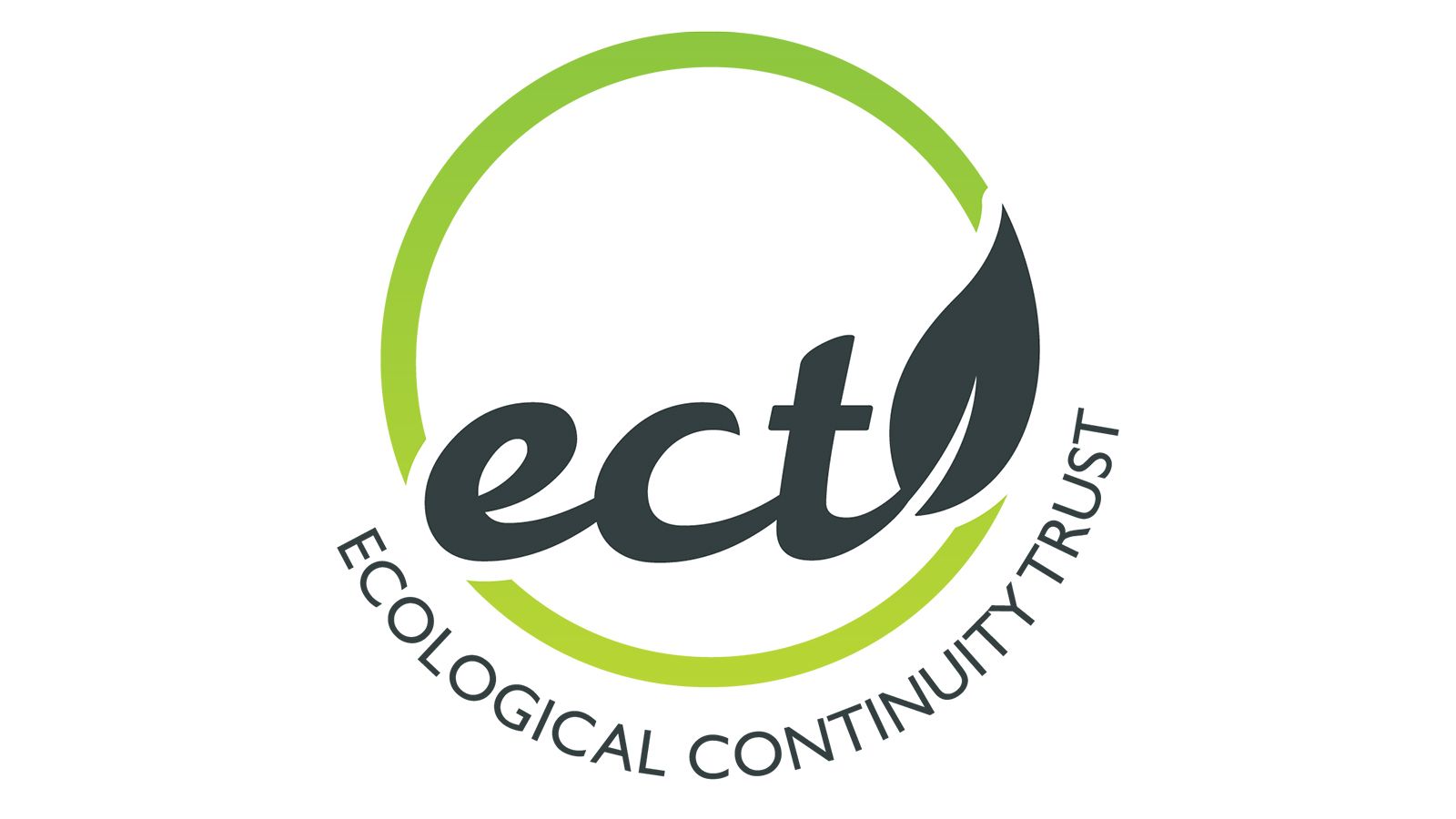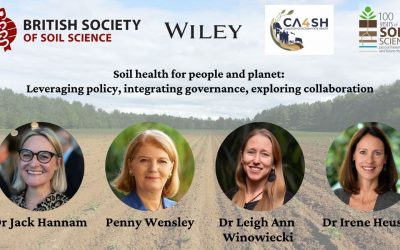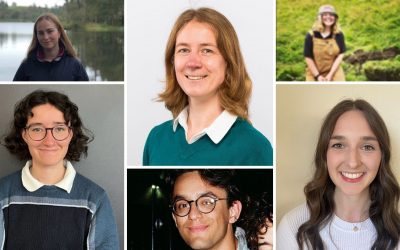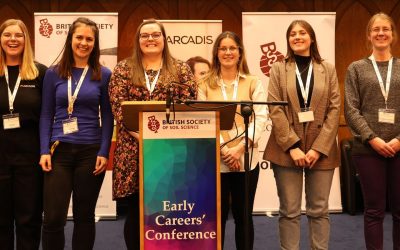Science communication has many facets. Most of us at some point in our careers will be called upon to communicate our science to someone, somewhere, from fulfilling funders’ requirements to explaining to friends down at the pub what it is we are doing. Audience is of course crucial to designing the right tools and approaches, and around 18 months ago this set us thinking here at the Ecological Continuity Trust (ECT) about the challenge of bringing the science being conducted at distant, remote and often inaccessible ecological field sites to a wider audience. It was a chance conversation with a member of staff at the UK Centre for Ecology and Hydrology in Bangor, during an ECT site visit to the long-term climate change experiment at Clocaenog, that set us on the path to Virtual Reality, or VR for short. An initial telephone call with a VR technology provider revealed that software more commonly used for gaming and cricket simulations could be adapted for use at the cutting edge of innovative science communication. And so ECT’s headsets (pictured) became a (virtual) reality, first launched upon the world at the British Ecological Society’s 2019 Annual Meeting in Belfast.
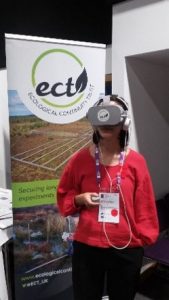
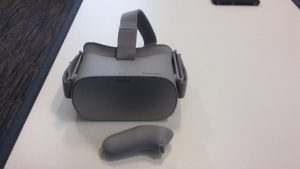
The first subject of our venture into the world of VR was the Buxton Climate Change Impacts Laboratory (BCCIL) in Derbyshire in 2019, followed in 2020/21 by the Whim Bog nitrogen deposition experiment in the Scottish Borders just south of Edinburgh. ECT now owns five headsets with both VR scenarios installed on each.
Buxton Climate Change Impacts Laboratory (BCCIL)
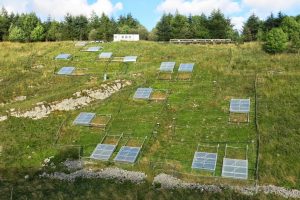
Sited on privately-owned land sloping at a gradient of 33% in places, BCCIL is a place you can visit only by prior arrangement and if you are physically able. VR is therefore an ideal vehicle for bringing the experiment to life for anyone at any location who has use of a headset. And it is science communication on the user’s own terms – you choose which parts of the site you visit and which elements of the experiment you wish to learn more about through 360-degree video footage taken on the site itself with ecologist and Principal Investigator Raj Whitlock from the University of Liverpool. These features are accessed using a handheld controller (pictured above) which allows the user to ‘teleport’ to different site locations whilst remaining stationary in the real world. There is no need to physically walk around, though users will always turn around on the spot to take in the full 360-degree view available. You can spend 10 minutes in the ‘experience’ or 45 minutes viewing every filming point within the VR landscape. For those readers who have not yet experienced a VR headset, there is a 2D video preview of the Buxton scenario available via ECT’s YouTube channel here:
https://www.youtube.com/watch?v=-tILUti2tYI
Read more about BCCIL here: https://www.ecologicalcontinuitytrust.org/bccil
Whim Bog Nitrogen Deposition Experiment
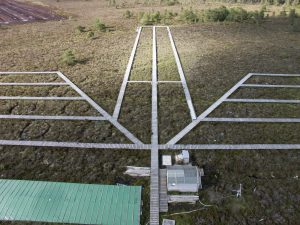
Our latest VR project for 2021 is centred upon the spectacular 19-year-long Whim Bog field experiment investigating the impacts of nitrogen addition on lowland blanket bog ecosystems. Located on privately-owned peatlands in the remote Scottish Borders south of Edinburgh, it is another prime candidate for a VR science communication approach, particularly given the scale of the site. In this case the site topography is flat, making the experiment more physically accessible, but visiting is again by prior arrangement only. As with Buxton, the VR representation of the site features numerous information points which the user can select to access embedded 360-degree video footage taken at the site itself. This features interviews with Principal Investigators Matt Jones and Netty van Dijk from the UK Centre for Ecological and Hydrology, Edinburgh. The user can again spend as much or as little time at each point as they wish, but users of this particular VR experience should not leave without undertaking the virtual ‘hot air balloon flight’ built around real 360-degree aerial drone footage taken above the experiment! It is an unforgettable experience. To provide a ‘feel’ for these features in the Whim VR experience, ECT has made four of the embedded 360-degree videos available on our YouTube channel. You can access these from this blog at the following links, and use your mouse, tracker pad or touchscreen to drag the view around 360 degrees:
Introduction to Whim Bog Long-term Experiment
Whim Bog LTE – The Control Shed
Whim Bog LTE – Sprinkler Operation
Whim Bog LTE – Drone Aerial Flyover 2
Read more about Whim Bog here: https://www.ecologicalcontinuitytrust.org/whim
Future Applications of VR in Science Communication and Teaching
VR technology is moving very rapidly indeed, and in one sense some ‘new’ applications become superseded quite quickly. That does not in any way undermine their value – rather it is simply that what can now be achieved through VR is becoming limited only by imagination (and one’s available budget). ECT’s next venture into VR is likely to enable the user to physically move around an experiment more and perhaps interact directly with certain features, such as activating a drought cover, or switching on a sprinkler system for example. For the soil sciences, the technology lends itself well to virtual exploration of different soil compartments, both for general science communication purposes as well as teaching.
Looking to the future, ECT foresees a time when conference delegates carry their own personal VR headsets and download all types of content on demand from the internet as part of their conference experience.
The views expressed in this blog do not necessarily reflect the views of the British Society of Soil Science.

